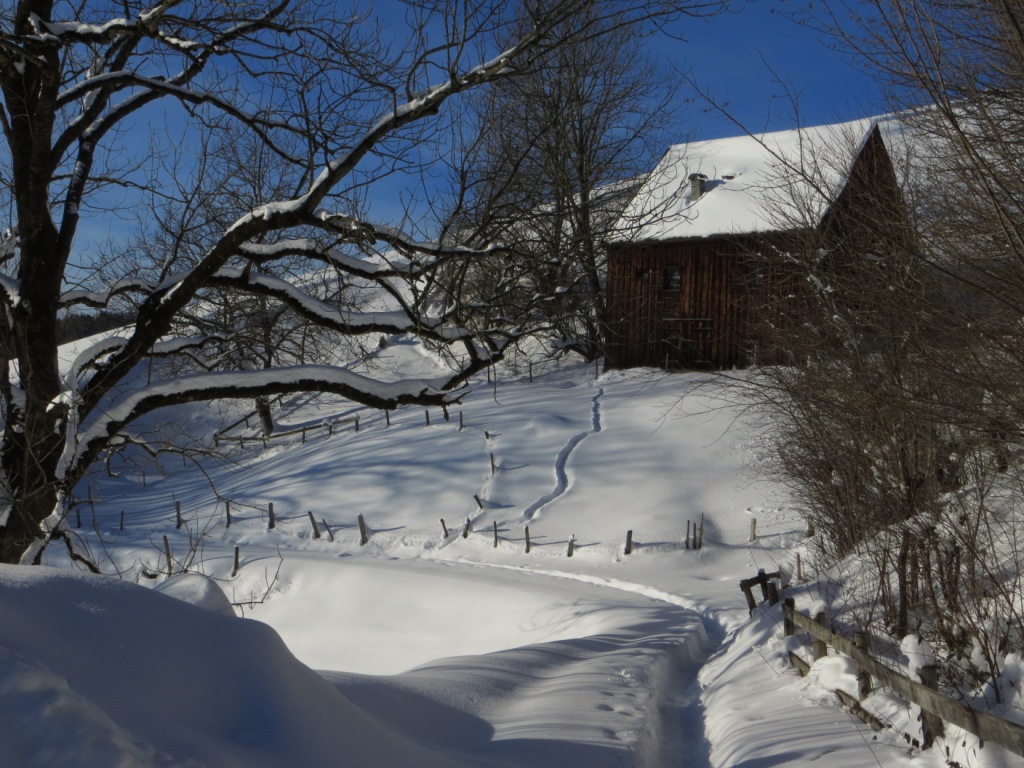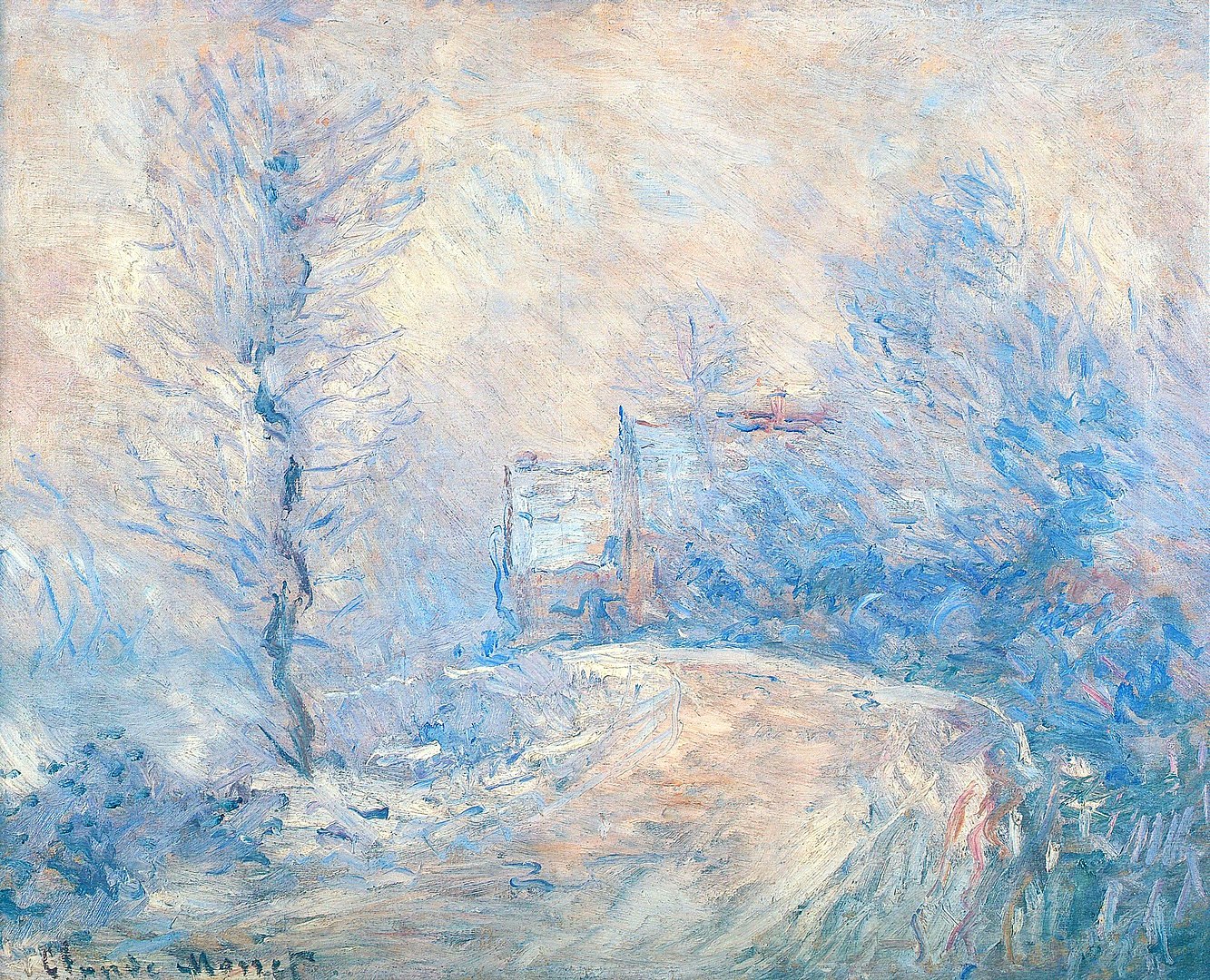Lorem ipsum dolor sit amet, consectetur adipiscing elit. Ut elit tellus, luctus nec ullamcorper mattis, pulvinar dapibus leo.
Neat to know ~ Feature of the week
Lorem ipsum dolor sit amet, consectetur adipiscing elit. Ut elit tellus, luctus nec ullamcorper mattis, pulvinar dapibus leo.
SNOW
in art, in music, in poetry, in the world

Photo: N.Kim, Gais, Switzerland
2020-12-08
Some parts of the world saw the first snowflakes drifting down from the sky this week. Of all the seasonal transformations that landscapes go through, being blanketed by snow might be one of the most magical. The subdued browns and greens of the land get a sudden shroud of dazzling white. Gray cities turn into fairy tale kingdoms. After a new snow, a hush falls over the world, as cars are buried, streets are blocked, and every sound is muffled. Snowfall is silent and soft, as it transfigures everything it touches, one tiny crystal at a time.
Inspiring art
On canvas

“Coming into Giverny in the Snow,” Claude Monet, 1885, Public Domain
Through melody
The Italian composer Antonio Vivaldi (1678-1741) wrote a collection of violin concertos called, “The Four Seasons.” Each concerto is divided into three parts called movements.
The first movement of “Winter” begins with light, staccato violins – the first stray snowflakes drifting down from the gray sky. They start to gradually increase, and then the wind picks up. Snow and wind build until a full snow storm strikes, swirling, whirling, blotting out the sky in a crescendo of snowfall. The violins are so clear in some places that you can almost sense the sharp edges of the crystalline snowflakes as they flurry to the ground.
In the second movement, the storm has passed, leaving behind a sparkling white vastness. The frosted trees twinkle in the sun. Icicles drip, drip, drip into little streams.
Clouds start to gather again at the start of the third movement. Breezes shift and pick up. Wind blows in sudden bursts. Animals scurry into hiding, as they sense the impending storm. Then there is a brief moment of calm… before… BLIZZARD!
Take a listen to all three movements of Vivaldi’s “Winter” concerto.
In words
The British poet Sylvia Kantaris writes about how it feels to wake up on a wintry morning.
Awakening to Snow
Blades of light slide under my eyelids
and prise them open to discover
softness.
This is whisper day, muffled in deep down
of eiderdown snow, day of
those other echoes and shadows on frosted window-panes
that pass by furtively, wondering.
Today is hushed blue day of nothing, of
empty footprints where feet were,
of absence.
Today adrift from all the gongs of time,
suspended on the feather of your
silent white breath.
About snow
- Maybe you’ve heard that every snowflake is unique. This is true! The reason is that each snowflake comes into being under slightly different conditions. A particle – maybe a dot of dust or a pinprick of pollen – forms the “nucleus” of each snowflake. Around this particle, water freezes and an ice crystal is born. More water vapor in the air helps build the crystal further. It grows six arms and may change shape and size as it falls to earth, depending on the temperature of and the moisture level in the air.
- There are different types of snowflakes, from feathery stars to thin “needles,” which form at colder temperatures.
- The speed at which snowflakes fall to the ground depends on conditions in the air. But generally, it takes a single snowflake about an hour to travel from cloud to earth.
- Snowflakes are not white. They are actually translucent. Their crystal structures scatter light (don’t absorb it), reflecting back all colors in the spectrum and causing us to see white.
- For snow to fall, the temperature in the atmosphere must be at or below freezing. There also has to be enough moisture in the air. It can’t ever be “too cold to snow.” It can, however, be too dry. An area in Antarctica called the Dry Valleys is an example of a place where it is extremely cold, but also very windy. There isn’t much snow there, despite the low temperatures, because the air is too dry.
- There are different types of snowfall, from blizzards (intense storms that continue for three or more hours during which there is very low visibility) to snow flurries (light, unsteady snowfall with little build-up on the ground), to snowbursts (brief but fierce snowfall that accumulates quickly).
- There are also different types of snow. In new snow, you can see the individual crystal shapes of snowflakes. Seasonal snow stays on the ground for weeks or months. Perennial snow stays on the ground for years.
- And, there are different types of snow formations. Weather conditions like fluctuating temperatures, variations in amounts of sunshine, and different wind speeds can dramatically alter the way snow sits on the earth. Snow drifts can form in areas where powerful winds whip up snow into high frozen walls. Megadunes in Antarctica are expansive waves of snow that contain monster snowflakes, almost an inch (2 cm) across. And penitents are thin, pointy towers of hard snow that are crowded close together in snow fields and are all angled toward the sun. These incredible snow spires can reach several feet (several meters) in height.
- Snow can alter sound. Fresh snow covering the ground absorbs sound waves, creating a muffling effect. However, when snow lies around for a while, starts melting slightly, and then refreezes, the surface of the snow cover becomes dense and glassy, causing it to reflect sound waves. This can make sounds louder, giving them an echoing quality.
- A pile of snow contains lots of trapped air. For this reason, it works like insulation. There are numerous animal species that dig into the snow to create cozy burrows in which they hibernate during the coldest winter months. Humans also use snow to build warm homes. Igloos are snow structures built by the Inuit that are toasty warm inside, thanks to the conservation of body heat by the thick snow walls.
Sources: National Snow and Ice Data Center, “All About Snow,” https://nsidc.org/cryosphere/snow/science, January 10, 2020; National Oceanic and Atmospheric Administration, “How do snowflakes form? Get the science behind snow,” https://www.noaa.gov/stories/how-do-snowflakes-form, December 19, 2016; Shaw, Dale, BBC Earth, “17 surprising facts about snow,” https://www.bbcearth.com/blog/?article=surprising-facts-about-snow.